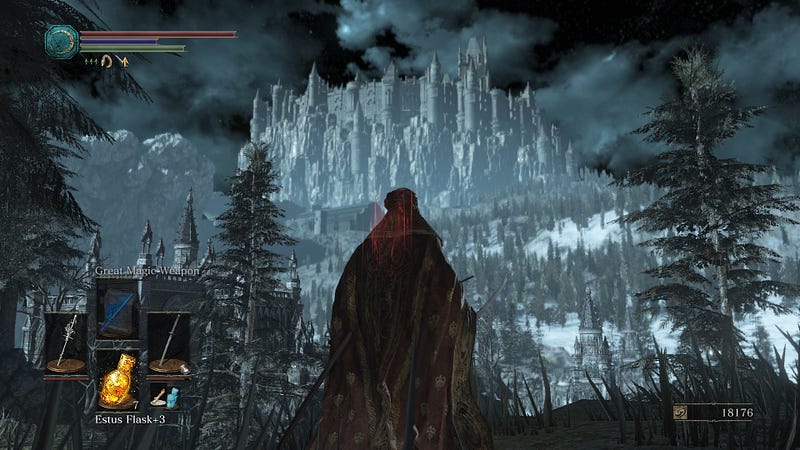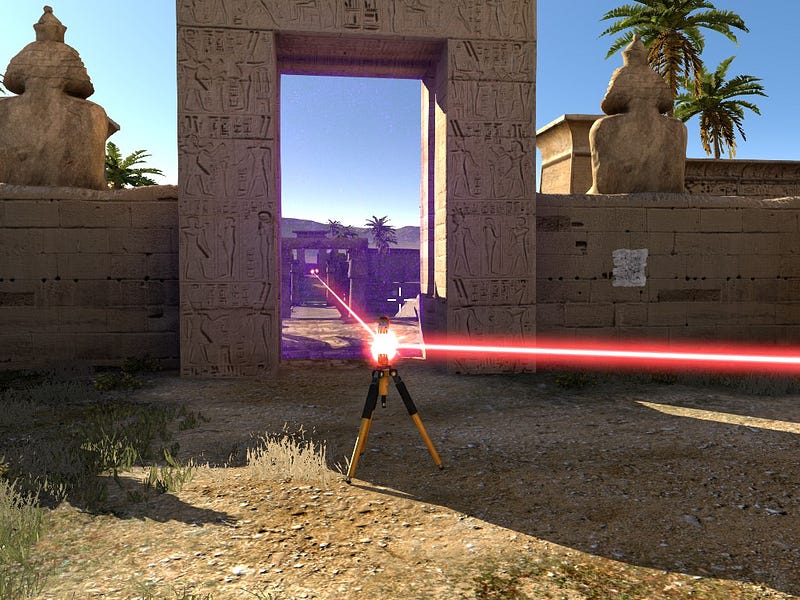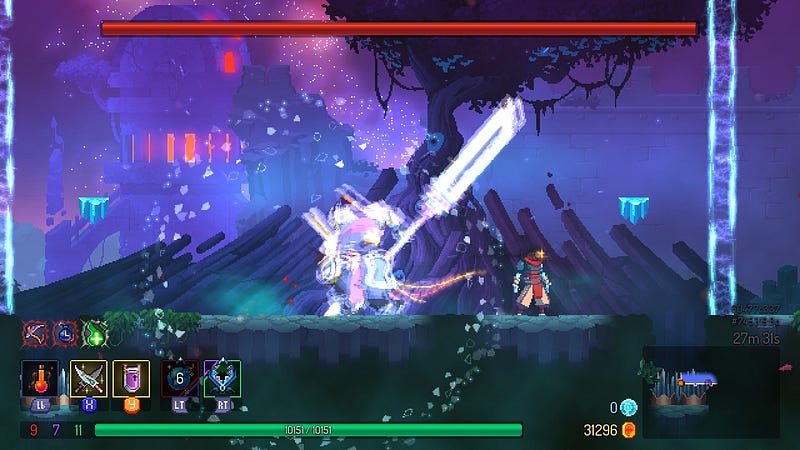Trending
Opinion: How will Project 2025 impact game developers?
The Heritage Foundation's manifesto for the possible next administration could do great harm to many, including large portions of the game development community.

Featured Blog | This community-written post highlights the best of what the game industry has to offer. Read more like it on the Game Developer Blogs or learn how to Submit Your Own Blog Post
Gameplay may come in all forms and genres, but today, we're going to talk about how we can break it down into two philosophies that govern the player's experience.

With all the games I’ve played via Game-Wisdom and studying for my books on game design, I’ve picked up a lot in terms of game design philosophy. For today’s post, we’re going back to basics and discussing how every videogame every made falls into one of two schools of design.

Mechanical gameplay is best used when you want the player to experience a set event or handle a specific challenge. Older forms of this design were featured heavily in early videogames and arcade games.
Classic games would frequently make use of event triggers and timers in order to make sure that everything would happen the same way every time. We’ve spoken about Kaizo games in the past and how they are examples of mechanical gameplay taken to the extreme.
What we haven’t yet talked about is how this trend still exists in modern titles; albeit in smaller doses. Whenever you have a scripted event, a situation with a fixed outcome, or anytime where the player’s interaction doesn’t matter, that would be an example of mechanical gameplay.
Many AAA games today feature bombastic set pieces:  such as the Tomb Raider and Uncharted series , where everything is happening around the player…and all they’re doing is pressing forward and jumping.
Titles that feature set puzzles would also be an example of mechanical gameplay, be it puzzle games or puzzles in another genre. The key element here is that the design of the game only allows for one way to succeed, or having one best way that works every time. Anyone who has watched speedrunners can see how classic games can be broken down by their set elements to find the best path through. Due to the fixed nature of timers and patterns, many classic games can be played with tool assisted speedrun programs or TAS.

mechanical gameplay is about setting up every element exactly how the player should experience it
There is nothing inherently good or bad about this kind of design. If you want the player to do something specific or get a certain reaction out of them, mechanical gameplay allows the designer to control the gamespace and play.
With that said, as more developers embraced rogue-like design and replayability, we saw a second kind of gameplay appear.
Games that introduce random elements cannot be 100% predicted and it goes to the player to figure out how to react and adapt. Reactionary gameplay refers to titles that cannot be played the same way every time for different reasons.
Maybe the game procedurally generates the gamespace, or all equipment is randomly given to the player, or enemies don’t have the same fixed pattern.
Whenever the game features elements that are not set in stone, the player will have to make judgment calls at a moment’s notice.
One of the best examples of this kind of gameplay is the evolution of the action genre with random pattern design. Action titles for the longest time featured fixed patterns: where bosses and enemies would do the same thing every time. This led to battles being mechanical, and in some cases, you could only beat the boss by doing one thing over and over again.
Random pattern design means that the enemy decides what attack to use base on their pool of attacks defined by the developer. As the player, you may know what to expect, but you have no idea what attacks the enemy will use at any time. Recent hits like Souls-Likes, Nioh, and most likely Sekiro Shadows Die Twice, are perfect examples.

reactionary gameplay relies on creating elements that will test the player in new and different ways
The rogue-like genre at its best can also fit here, as the player must be constantly reacting to every room, every item drop, and so on down the line. This is also the reason for the high replayability, as every run is a different experience to challenge the player.
Reactionary gameplay is arguably a lot harder to balance compared to mechanical. As the developer, you don’t have complete control over the experience: some players may have an easy time, others may become frustrated. Giving up that control also makes it harder to focus on a set story and narrative, as the game is supposed to be something that can be replayed many times.
Both have their place when it comes to designing a videogame, but is one better than the other?
Both mechanical and reactionary gameplay have their places in today’s market, and it’s better to figure out what your game is going to be as early as possible.
Similar to our talks on action and abstracted gameplay, you need to be really careful when it comes to mixing gameplay types. Games that are meant to have replayable elements can be hurt if there are too many set experiences in them. Like-wise, building your game around guiding the player through it, and then just throwing them to the wolves, may frustrate players who weren’t expecting it.
An interesting combination of the two would be the JRPG genre. Many JRPGs feature very rigid stories and situations, but allow the player control over their party’s builds, skills, etc. You still need to be careful though when it comes to balancing choices for encounters. A famous design trap of the JRPG genre is giving the player all matter of status affecting skills, but rendering them useless for any boss encounter.
Conversely, we’ve seen CRPGs, or WRPGs, focus more on letting the player have control over the story and gameplay at the same time. However, they still run into issues when there are set encounters or situations that the player may not have spec’d towards. As we talked about when it comes to choice in videogames, every choice must be balanced to provide a benefit in your title.
If you’re going to focus purely on mechanical gameplay, then you want to make things as polished and as refined as possible, as the player is not going to have any control over things. The risks of padding out a mechanical game are higher than a reactionary one; this is again due to the player not being able to impact things. For story-driven games, the player is willing to accept repetitive gameplay if the story continues to keep moving, but if it feels like nothing is changing, they may give up playing.
Regardless of what kind of gameplay you’re aiming for, you want to figure out these aspects as early into development as possible. As with the core gameplay loop, they will become the foundation for your title and from where all other decisions and systems will stem from.
For you reading this: Can you think of games that were too mechanical in their approach: where the entire thing felt like you were going through the motions. Or can you think of a game that is too reactionary: where everything just seemed to be a chaotic mess.
Read more about:
Featured BlogsYou May Also Like